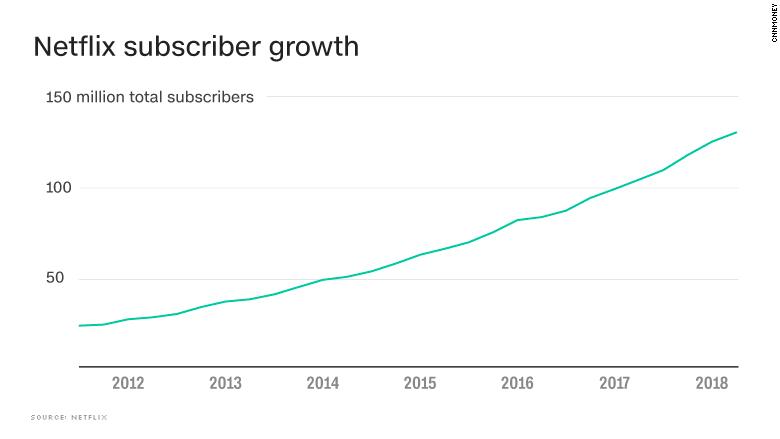Agios Pharmaceuticals (NASDAQ:AGIO) has been given a $125.00 price objective by equities research analysts at Piper Jaffray Companies in a research report issued to clients and investors on Thursday. The firm currently has a “buy” rating on the biopharmaceutical company’s stock. Piper Jaffray Companies’ price objective points to a potential upside of 50.33% from the stock’s current price.
A number of other research analysts have also recently commented on AGIO. BidaskClub cut Agios Pharmaceuticals from a “strong-buy” rating to a “buy” rating in a research note on Monday, June 18th. SunTrust Banks reiterated a “buy” rating and issued a $123.00 price target on shares of Agios Pharmaceuticals in a research note on Monday, July 23rd. Cann reaffirmed a “hold” rating on shares of Agios Pharmaceuticals in a research report on Friday, July 20th. Credit Suisse Group set a $95.00 target price on Agios Pharmaceuticals and gave the stock a “buy” rating in a research report on Monday, May 7th. Finally, ValuEngine raised Agios Pharmaceuticals from a “buy” rating to a “strong-buy” rating in a research report on Wednesday, May 2nd. Four equities research analysts have rated the stock with a hold rating, ten have issued a buy rating and one has given a strong buy rating to the stock. The company has an average rating of “Buy” and an average price target of $96.27.
Hot Bank Stocks To Invest In 2019: Cellectis S.A.(CLLS)
Advisors' Opinion:- [By Stephan Byrd]
Shares of Cellectis SA (NASDAQ:CLLS) have earned an average recommendation of “Hold” from the nine research firms that are presently covering the company, Marketbeat reports. One investment analyst has rated the stock with a sell recommendation, three have assigned a hold recommendation and five have assigned a buy recommendation to the company. The average 1-year price objective among brokerages that have covered the stock in the last year is $42.00.
Hot Bank Stocks To Invest In 2019: Attunity Ltd.(ATTU)
Advisors' Opinion:- [By Joseph Griffin]
Attunity Ltd (NASDAQ:ATTU) has earned an average recommendation of “Buy” from the six ratings firms that are currently covering the firm, Marketbeat reports. Four investment analysts have rated the stock with a buy rating and one has assigned a strong buy rating to the company. The average 1 year price target among analysts that have covered the stock in the last year is $12.33.
- [By Joseph Griffin]
Get a free copy of the Zacks research report on Attunity (ATTU)
For more information about research offerings from Zacks Investment Research, visit Zacks.com
- [By Logan Wallace]
Get a free copy of the Zacks research report on Attunity (ATTU)
For more information about research offerings from Zacks Investment Research, visit Zacks.com
Hot Bank Stocks To Invest In 2019: ASML Holding N.V.(ASML)
Advisors' Opinion:- [By Ethan Ryder]
ASML (NASDAQ: ASML) and ACM Research (NASDAQ:ACMR) are both computer and technology companies, but which is the superior investment? We will contrast the two companies based on the strength of their dividends, valuation, analyst recommendations, risk, institutional ownership, profitability and earnings.
- [By Max Byerly]
Get a free copy of the Zacks research report on ASML (ASML)
For more information about research offerings from Zacks Investment Research, visit Zacks.com
- [By Jon C. Ogg]
ASML Holding N.V. (NASDAQ: ASML) was down 2.6% to $197.02 on Friday morning. The stock has a 52-week trading range of $126.03 to $216.00 and a consensus analyst target price of $196.81.
- [By Max Byerly]
Front Row Advisors LLC increased its holdings in ASML Holding NV (NASDAQ:ASML) by 15.5% during the first quarter, according to the company in its most recent 13F filing with the Securities and Exchange Commission. The institutional investor owned 5,247 shares of the semiconductor company’s stock after purchasing an additional 703 shares during the period. Front Row Advisors LLC’s holdings in ASML were worth $1,042,000 as of its most recent SEC filing.
 Orchid Island Capital, Inc., a specialty finance company, invests in residential mortgage-backed securities (RMBS) in the United States. The company's RMBS are backed primarily by single-family residential mortgage loans, referred as Agency RMBS. Its portfolio includes traditional pass-through Agency RMBS; and structured Agency RMBS, including collateralized mortgage obligations, interest only securities, inverse interest only securities, and principal only securities. The company qualifies as a real estate investment trust for federal income tax purposes. It generally would not be subject to federal income taxes if it distributes at least 90% of its taxable income to its stockholders. The company was founded in 2010 and is headquartered in Vero Beach, Florida.
Orchid Island Capital, Inc., a specialty finance company, invests in residential mortgage-backed securities (RMBS) in the United States. The company's RMBS are backed primarily by single-family residential mortgage loans, referred as Agency RMBS. Its portfolio includes traditional pass-through Agency RMBS; and structured Agency RMBS, including collateralized mortgage obligations, interest only securities, inverse interest only securities, and principal only securities. The company qualifies as a real estate investment trust for federal income tax purposes. It generally would not be subject to federal income taxes if it distributes at least 90% of its taxable income to its stockholders. The company was founded in 2010 and is headquartered in Vero Beach, Florida. Alexandria Real Estate Equities, Inc. (NYSE:ARE), an S&P 500庐 company, is an urban office real estate investment trust ("REIT") uniquely focused on collaborative life science and technology campuses in AAA innovation cluster locations, with a total market capitalization of $17.9 billion and an asset base in North America of 30.2 million SF as of March 31, 2018. The asset base in North America includes 20.8 million RSF of operating properties and 3.5 million RSF of development and redevelopment of new Class A properties currently undergoing construction and pre-construction activities with target delivery dates ranging from 2018 through 2020. Additionally, the asset base in North America includes 5.9 million SF of intermediate-term and future development projects, including 3.6 million SF of intermediate-term development projects. Founded in 1994, Alexandria pioneered this niche and has since established a significant market presence in key locations, including Greater Boston, San Francisco, New York City, San Diego, Seattle, Maryland, and Research Triangle Park. Alexandria has a longstanding and proven track record of developing Class A properties clustered in urban life science and technology campuses that provide its innovative tenants with highly dynamic and collaborative environments that enhance their ability to successfully recruit and retain world-class talent and inspire productivity, efficiency, creativity, and success. Alexandria also provides strategic capital to transformative life science and technology companies through its venture capital arm. We believe our unique business model and diligent underwriting ensure a high-quality and diverse tenant base that results in higher occupancy levels, longer lease terms, higher rental income, higher returns, and greater long-term asset value. For additional information on Alexandria, please visit www.are.com.
Alexandria Real Estate Equities, Inc. (NYSE:ARE), an S&P 500庐 company, is an urban office real estate investment trust ("REIT") uniquely focused on collaborative life science and technology campuses in AAA innovation cluster locations, with a total market capitalization of $17.9 billion and an asset base in North America of 30.2 million SF as of March 31, 2018. The asset base in North America includes 20.8 million RSF of operating properties and 3.5 million RSF of development and redevelopment of new Class A properties currently undergoing construction and pre-construction activities with target delivery dates ranging from 2018 through 2020. Additionally, the asset base in North America includes 5.9 million SF of intermediate-term and future development projects, including 3.6 million SF of intermediate-term development projects. Founded in 1994, Alexandria pioneered this niche and has since established a significant market presence in key locations, including Greater Boston, San Francisco, New York City, San Diego, Seattle, Maryland, and Research Triangle Park. Alexandria has a longstanding and proven track record of developing Class A properties clustered in urban life science and technology campuses that provide its innovative tenants with highly dynamic and collaborative environments that enhance their ability to successfully recruit and retain world-class talent and inspire productivity, efficiency, creativity, and success. Alexandria also provides strategic capital to transformative life science and technology companies through its venture capital arm. We believe our unique business model and diligent underwriting ensure a high-quality and diverse tenant base that results in higher occupancy levels, longer lease terms, higher rental income, higher returns, and greater long-term asset value. For additional information on Alexandria, please visit www.are.com.

 BidaskClub downgraded shares of PACCAR (NASDAQ:PCAR) from a sell rating to a strong sell rating in a research report released on Saturday morning.
BidaskClub downgraded shares of PACCAR (NASDAQ:PCAR) from a sell rating to a strong sell rating in a research report released on Saturday morning.





 Cars.com Inc., through its subsidiaries, operates as a digital automotive marketplace that connects local car dealers to consumers in the United States. The company offers a suite of digital solutions that creates connections between individuals researching cars or looking to purchase a car with car dealerships and automotive original equipment manufacturers. It also sells online subscription advertising products to car dealerships by its direct sales force, as well as through its affiliate sales channel. In addition, the company sells display advertising to national advertisers. Further, it offers online automotive marketplace service that connects buyers and sellers through Cars.com, Auto.com, DealerRater.com, NewCars.com, PickupTrucks.com, DealerInspire.com, and LaunchDigitalMarketing.com Websites. Its platform hosts approximately 4.9 million new and used vehicle listings and serves approximately 20,000 franchise and independent car dealers. Cars.com Inc. was founded in 1998 and is headquartered in Chicago, Illinois.
Cars.com Inc., through its subsidiaries, operates as a digital automotive marketplace that connects local car dealers to consumers in the United States. The company offers a suite of digital solutions that creates connections between individuals researching cars or looking to purchase a car with car dealerships and automotive original equipment manufacturers. It also sells online subscription advertising products to car dealerships by its direct sales force, as well as through its affiliate sales channel. In addition, the company sells display advertising to national advertisers. Further, it offers online automotive marketplace service that connects buyers and sellers through Cars.com, Auto.com, DealerRater.com, NewCars.com, PickupTrucks.com, DealerInspire.com, and LaunchDigitalMarketing.com Websites. Its platform hosts approximately 4.9 million new and used vehicle listings and serves approximately 20,000 franchise and independent car dealers. Cars.com Inc. was founded in 1998 and is headquartered in Chicago, Illinois. Sphere 3D Corp. provides data management, and desktop and application virtualization solutions in the Americas, Europe, the Middle East, Africa, and the Asia Pacific. It enables organizations to deploy a combination of public, private, or hybrid cloud strategies through containerized applications, virtual desktops, virtual storage, and physical hyper-converged platforms. The company offers RDX removable disk systems that provide scalability, centralized management, encryption and duplication, and reliability for backup, archive, data interchange, and disaster recovery; G-Series Appliance and G-Series Cloud applications; and Glassware Open Virtual Appliance and Open Virtual Format products. It also provides HVE converged and hyper-converged Infrastructure solutions, such as HVE-STACK high density server solution; HVE-VELOCITY high availability dual enclosure storage area network solution; and HVE 3DGFX, a virtualized desktop infrastructure solution. In addition, the company offers SnapServer network attached storage solution, a platform for primary or nearline storage for integration with Windows, UNIX/Linux, and Macintosh environments; NEO tape-based backup and long-term archive solutions, including tape libraries, autoloaders, and drives, as well as linear tape file system solutions; and LTO tape drives and media products. Sphere 3D Corp. markets its products under the RDX, Glassware 2.0, SnapCLOUD, SnapServer, SnapSync, NEO, and V3 brand names. The company sells its products through its distributor and reseller network to small and medium businesses, and distributed enterprises. Sphere 3D Corp. is headquartered in Mississauga, Canada.
Sphere 3D Corp. provides data management, and desktop and application virtualization solutions in the Americas, Europe, the Middle East, Africa, and the Asia Pacific. It enables organizations to deploy a combination of public, private, or hybrid cloud strategies through containerized applications, virtual desktops, virtual storage, and physical hyper-converged platforms. The company offers RDX removable disk systems that provide scalability, centralized management, encryption and duplication, and reliability for backup, archive, data interchange, and disaster recovery; G-Series Appliance and G-Series Cloud applications; and Glassware Open Virtual Appliance and Open Virtual Format products. It also provides HVE converged and hyper-converged Infrastructure solutions, such as HVE-STACK high density server solution; HVE-VELOCITY high availability dual enclosure storage area network solution; and HVE 3DGFX, a virtualized desktop infrastructure solution. In addition, the company offers SnapServer network attached storage solution, a platform for primary or nearline storage for integration with Windows, UNIX/Linux, and Macintosh environments; NEO tape-based backup and long-term archive solutions, including tape libraries, autoloaders, and drives, as well as linear tape file system solutions; and LTO tape drives and media products. Sphere 3D Corp. markets its products under the RDX, Glassware 2.0, SnapCLOUD, SnapServer, SnapSync, NEO, and V3 brand names. The company sells its products through its distributor and reseller network to small and medium businesses, and distributed enterprises. Sphere 3D Corp. is headquartered in Mississauga, Canada.
 Nu Skin Enterprises, Inc. develops and distributes anti-aging personal care products and nutritional supplements under the Nu Skin and Pharmanex category brands worldwide. It provides skin care systems and targeted treatment products, including ageLOC Me customized skin care systems, ageLOC Spa systems, and ageLOC LumiSpa skin treatment and cleansing devices; and Epoch products, as well as a range of other cosmetic, personal care, and hair care products. The company also offers ageLOC Youth nutritional supplements, ageLOC TR90 weight management and body shaping systems, and LifePak nutritional supplements, as well as other anti-aging nutritional solutions and weight management products. In addition, it is involved in the research and product development of skin care products and nutritional supplements. Further, the company operates walk-in centers and pick-up locations; and retail stores and service centers in Mainland China. The company sells its products directly, as well as through distributors and Website. Nu Skin Enterprises, Inc. was founded in 1984 and is headquartered in Provo, Utah.
Nu Skin Enterprises, Inc. develops and distributes anti-aging personal care products and nutritional supplements under the Nu Skin and Pharmanex category brands worldwide. It provides skin care systems and targeted treatment products, including ageLOC Me customized skin care systems, ageLOC Spa systems, and ageLOC LumiSpa skin treatment and cleansing devices; and Epoch products, as well as a range of other cosmetic, personal care, and hair care products. The company also offers ageLOC Youth nutritional supplements, ageLOC TR90 weight management and body shaping systems, and LifePak nutritional supplements, as well as other anti-aging nutritional solutions and weight management products. In addition, it is involved in the research and product development of skin care products and nutritional supplements. Further, the company operates walk-in centers and pick-up locations; and retail stores and service centers in Mainland China. The company sells its products directly, as well as through distributors and Website. Nu Skin Enterprises, Inc. was founded in 1984 and is headquartered in Provo, Utah. PetIQ, Inc. develops, manufactures, and distributes pet medications, and health and wellness products for dogs and cats in the United States, Canada, and Europe. It offers pet prescription medications, including products for arthritis, thyroid, and diabetes and pain treatments, as well as heartworm preventatives, antibiotics, and other specialty medications; over-the-counter medications and supplies, such as flea and tick control products in various forms comprising spot on treatments, chewables, and collars; and health and wellness products consisting of specialty treats and other pet products, which include dental treats and nutritional supplements. The company provides its products primarily under the VetIQ, PetAction Plus, Advecta, PetLock Plus, and TruProfen brands. It sells its products through distributors as well as through retail stores, including approximately 40,000 retail pharmacy locations. PetIQ, Inc. was founded in 2010 and is headquartered in Eagle, Idaho.
PetIQ, Inc. develops, manufactures, and distributes pet medications, and health and wellness products for dogs and cats in the United States, Canada, and Europe. It offers pet prescription medications, including products for arthritis, thyroid, and diabetes and pain treatments, as well as heartworm preventatives, antibiotics, and other specialty medications; over-the-counter medications and supplies, such as flea and tick control products in various forms comprising spot on treatments, chewables, and collars; and health and wellness products consisting of specialty treats and other pet products, which include dental treats and nutritional supplements. The company provides its products primarily under the VetIQ, PetAction Plus, Advecta, PetLock Plus, and TruProfen brands. It sells its products through distributors as well as through retail stores, including approximately 40,000 retail pharmacy locations. PetIQ, Inc. was founded in 2010 and is headquartered in Eagle, Idaho.